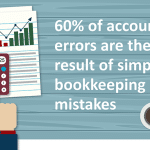
Understanding Your Profit and
Loss Statement: A Step-by-Step Guide
Welcome! This week’s feature
will focus on empowering our local business owners with practical financial
knowledge. Today, we’re diving into a crucial tool for any business owner: the
Profit and Loss Statement (P&L). This financial document, also known as an
income statement, provides a clear snapshot of your business’s financial
performance over a specific period. Let’s break it down step-by-step to
understand how to read it effectively.
Step 1: Recognize the
Components
A typical P&L statement is
divided into several key components:
- Revenue: This section lists the
total income generated from your business activities, including sales of
products or services before any expenses are deducted.
- Cost
of Goods Sold (COGS):
Direct costs attributable to the production of the goods sold in your
company. This includes materials and labor costs directly tied to service
delivery or product creation.
- Gross
Profit:
Calculated by subtracting COGS from Revenue. This figure tells you how
much money is left to cover all other expenses after covering the cost of
sales.
Step 2: Analyze Operating
Expenses
Operating expenses are the costs
associated with running your business that are not directly linked to the
creation of your product or service. These can include:
- Salaries
and wages:
Payments to employees.
- Rent: Cost of property used
for business operations.
- Utilities: Electricity, water,
internet, and other necessary services.
- Marketing
and advertising:
Costs to promote your business. Summing these expenses gives you the total
operating expenses.
Step 3: Calculate Net
Operating Income
Subtract the total operating
expenses from the gross profit to determine your Net Operating Income (NOI).
This number highlights the profitability of your business operations without
considering other income sources, taxes, and additional expenses.
Step 4: Consider Other Income
and Expenses
This section includes revenues
and costs not directly tied to regular business operations, such as:
- Interest
income:
Money earned from bank deposits.
- Rental
income:
If you rent out part of your business space.
- Interest
expense:
Cost of borrowed funds. Adding or subtracting these will adjust your NOI
to show your earnings before taxes.
Step 5: Deduct Taxes to Find
Net Income
Finally, subtract any taxes owed
from the earnings before taxes to arrive at your Net Income. This is the bottom
line that tells you the actual profitability of your business after all
expenses and taxes.
Step 6: Review and Compare
Now that you have your net
income, compare it with previous periods to identify trends, patterns, or areas
needing attention. Are your operating expenses creeping up? Is your gross
profit margin improving? These insights can help guide your business decisions.
Conclusion
Understanding your Profit and
Loss Statement is essential for making informed financial decisions and
steering your business towards greater profitability. Regular reviews will help
you recognize financial trends, manage expenses, and highlight opportunities
for growth.
I hope this guide has been
helpful. If you have questions or need further assistance understanding your
P&L statement, consider reaching out to a financial advisor, accountant,
bookkeeper, or i-Balanced. Remember, staying informed is key to business success!



